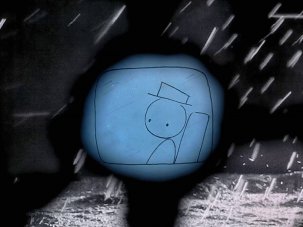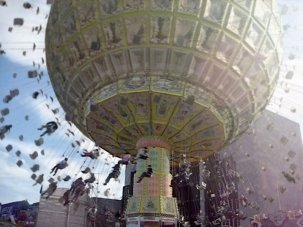Web exclusive
On its surface the one-minute animation film A Boy and His Atom doesn’t look like anything special or new. Composed entirely of what appear to be silver balls, it shows a boy dancing and playing with a silver ball before he tosses it into the sky where it forms the word “Think.”
Insert slow, sarcastic ‘golf clap’ after the film ends.
A Boy and his Atom looks like it could be a high-school film, a lost Norman McLaren or René Jodoin experiment from the early days of the National Film Board of Canada (NFB) or a variation of the 1970s video game PONG.
Look deeper, though – 100 million times or so – and you’ll spot something astonishing about this film: The Boy and His Atom was made entirely out of atoms by a team of IBM scientists.
The folks at Guinness – the records people, not the brewers, have officially deemed it The World’s Smallest Stop-Motion Film. Okay, I change my golf clap to a full clap accompanied by a wide-eyed look of astonishment.
The atoms were manipulated using a device called a Scanning Tunnelling Microscope (STM) – which sounds like something a proctologist will be using on me in the future. The STM, whose development earned a couple of IBM eggheads a Nobel Prize in Physics in 1986, is described “as a needle that drags atoms across a surface using magnetism.” A copper plate was used as the surface of the animation while carbon monoxide provided the most stable atoms for animating.
Pretty impressive – nay, mind-blowing – stuff (IBM has since done some Star Trek-related pieces as well), but what does it mean for animation?
A Boy and His Atom follows in a long tradition of collaborations between animation and science. In fact, one of the first computer-animation films, Hunger (Peter Foldes, 1974), was made collaboration between the aforementioned NFB and scientists at the National Research Council of Canada. While A Boy… is a nifty little experiment that expands animation’s technical arsenal, will it have any significant impact on animation? IBM scientists seem more interested in using the movie as a way of promoting IBM and having a bit of fun with their STM. Hopefully the response to the film will encourage them to seek out animation artists to collaborate on more enriching and stimulating works of art.









